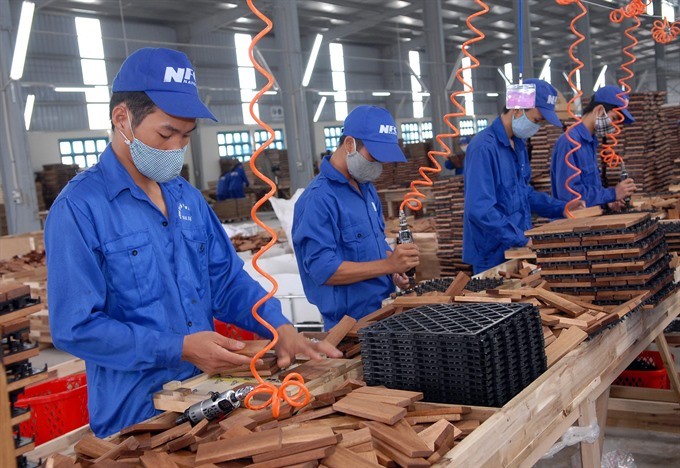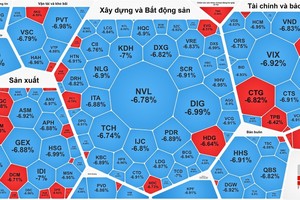
Nguyen Ton Quyen, vice chairman and General Secretary of Vietnam Timber and Forest Product Association (VIFORES), said the impressive growth rate in the first nine months boosts prospects of the wood sector achieving its target.
The sector earned $5.9 billion in export revenue from January to September, increasing 11 percent from the same period last year. The wood export turnover reached some $700 million a month.
Vietnam’s wood products achieved the highest export growth from particle boards, artificial wood boards, melamine-faced chipboards (MDF) and wood pellets.
The last three months of the year are generally the peak season for wood and wood product exports, so the industry’s target of $8 billion is deemed attainable.
Wood exports grew in most traditional and key markets, such as the US, Japan, the EU, China and South Korea. The value of exports to the five markets makes up nearly 90 percent of the total, said Quyen.
In May 2017, after a six-year negotiation process, Vietnam initiated the Vietnam-EU Voluntary Partnership Agreement (VPA) on the EU Forest Law Enforcement, Governance and Trade (FLEGT).
Fundamental changes
Quyen said implementation of this agreement in Vietnam will ensure all wood products on the agreed list are legal. The document could create fundamental changes for Vietnam’s wood processing sector, as well as domestic and export markets, including nations supplying wood material to Vietnam and those buying wood and timber products from Vietnam, he added.
However, the country is facing several challenges, including the short supply of raw wood. Apart from domestic wood, Vietnam imports a large amount of wood material worth $1.7-1.8 billion annually, equivalent to about 20-30 percent of the export turnover.
To Xuan Phuc, an expert from Forest Trends, said Vietnam’s export turnover of wooden products has been stable since 2015. However, Phuc said, the biggest challenge for the expansion of the wood sector was competition in raw wood purchase. China’s ban on natural forest logging, and restrictions imposed by Vietnam and other countries on the trade, exploitation and export of raw wood have limited supply globally.
He added that some of Vietnam’s major wood and wood product importers such as the US, Australia and the EU demand to know the legal origin of wood. This means wood must come from forests grown under sustainable forest management standards of the Forest Stewardship Council (FSC) and must be imported from non-risk sources.
South Korea and Japan are also planning to tighten the management of imported wood products, he said, adding that this would directly impact Vietnam’s exports to those markets.
The South Korean government will require importers to declare the legality and origin of wood and wood products imported into the country starting in late 2017. Japan will do the same in March 2018.
Vietnamese wood processors and exporters must therefore devise solutions and long-term strategies to reduce risks and boost export growth. Local processors should choose clean raw wood to meet importers’ requirements, he said.
























